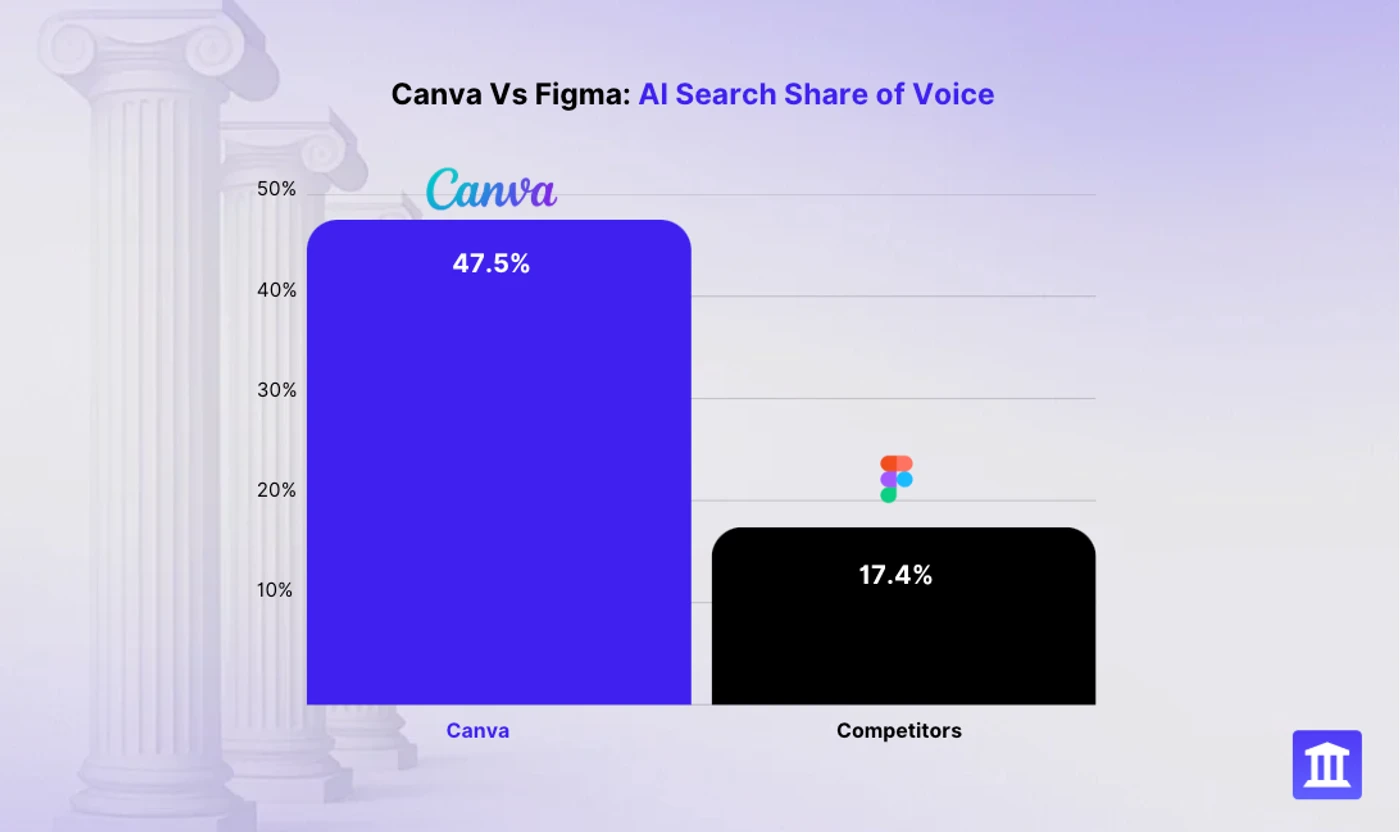
Canva vs. Figma: Who’s winning AI Search? (AthenaHQ breakdown)
The Stakes of AI Brand Performance in 2025
According to recent industry data from Forrester, nine in ten B2B software buyers use GenAI. This shift means that traditional SEO is no longer enough. Brands must now optimize for generative engines like ChatGPT, Gemini, and Claude, where the rules are different and the stakes are higher. AthenaHQ.ai stands at the forefront of this new era, pioneering generative engine optimization (GEO) and AI optimization (AIO) to help brands not just compete, but lead in AI-driven search results.
Recent AthenaHQ data shows that among 1,900 responses analyzed, 56.1% referenced a single brand, and Canva led AI-related mentions with 47.4% share of voice—nearly 3x higher than Figma’s 17.4%.
As Canva launches Canva Code and Figma make headlines with their draft S1 filing, AthenaHQ is quietly tipping the scale for brands aiming to win the next wave of digital attention.
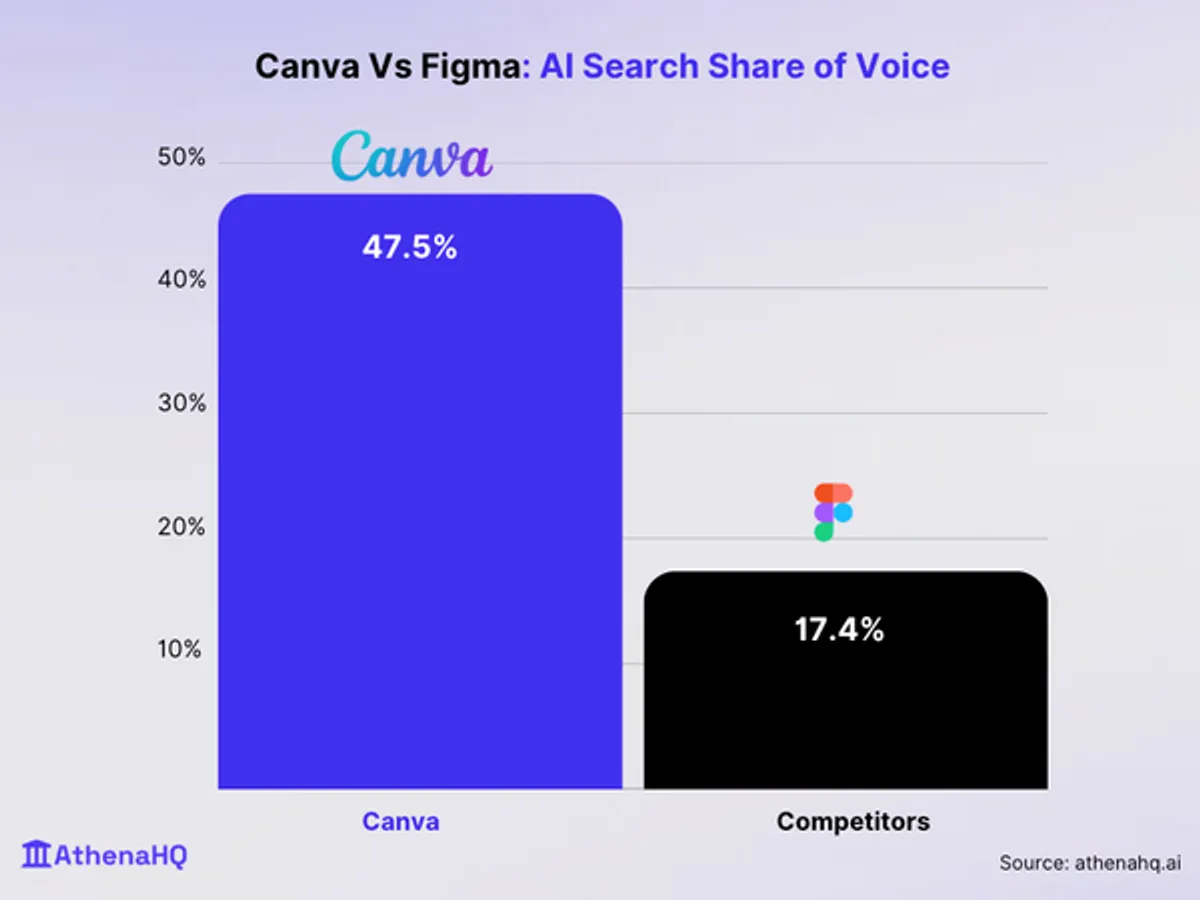
The Canva–Figma Showdown: What It Means for Brand Visibility
Understanding the Platforms
- Canva is designed for accessibility, offering a vast library of templates and drag-and-drop tools for non-designers. Its AI-powered features, such as Magic Design and branded QR codes, make it a favorite for entrepreneurs and content creators who need to produce polished visuals quickly[1].
- Figma targets professional designers and teams, excelling in collaborative UI/UX design, prototyping, and real-time teamwork. Its advanced features and integrations cater to organizations building complex digital products[2][1][3].
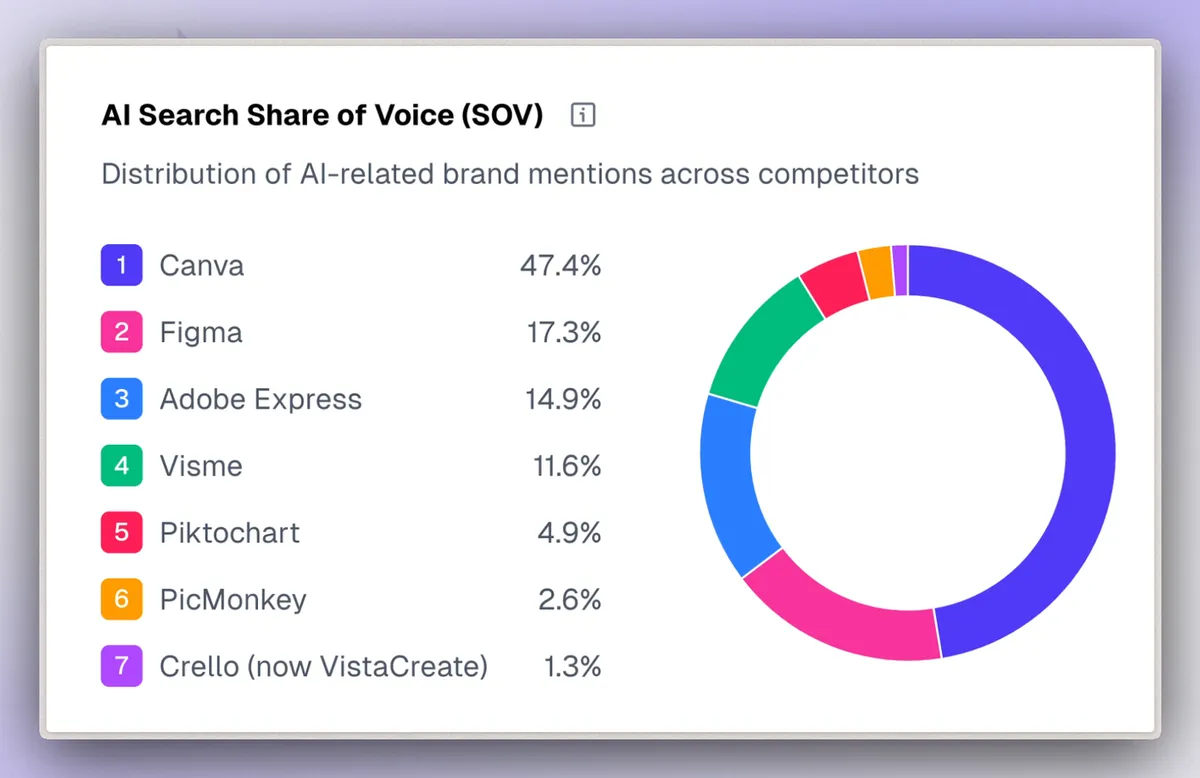
Key Differences
| Criteria | Canva | Figma |
|---|---|---|
| Target User | Non-designers, marketers, SMBs | Designers, product teams, enterprises |
| Collaboration | Real-time, basic | Real-time, advanced (Dev Mode, FigJam) |
| AI Features | Magic Design, image editing | AI-assisted design, code translation |
| Offline Functionality | Limited | Partial (desktop app) |
| Pricing Flexibility | Broad, individual to enterprise | Tiered, team-focused |
| Learning Curve | Low | Moderate to high |
Example: A SaaS startup uses Canva for quick social media campaigns, while its product team relies on Figma for app interface design and prototyping.
Despite Figma's deep functionality, recent tracking data from AthenaHQ shows it lagging behind Canva in AI-related visibility. In competitor mentions across 1,900 responses, Canva dominated with a 47.4% share in AI-related brand mentions, while Figma held 17.4%. Adobe Express (15%) and Visme (11.2%) followed behind.
Why AI Mentions and GEO Now Outweigh Traditional SEO
The Shift to Generative Search
AI platforms are now the first stop for many users seeking product recommendations, technical solutions, or brand information. Unlike traditional search engines, generative engines synthesize information from multiple sources, prioritizing brands that are frequently mentioned, contextually relevant, and technically optimized for AI consumption.
Key Brand Performance Metrics in AI:
- Brand Mention OKRs: How often your brand is referenced in AI-generated answers.
- AI Brand Awareness: The frequency and quality of your brand’s appearance in AI search results.
- AI Traffic and Conversion: The volume of qualified leads and conversions originating from AI-driven platforms.
Actionable Strategies:
- Optimize Content for AI Search: Structure information for clarity, context, and direct answerability.
- Increase Brand Mentions: Encourage third-party references and citations in authoritative sources.
- Configure Technical Files: Use tools like llms.txt to guide AI crawlers and answer engines.
Callout: Brands that appear in the top three AI-generated answers see up to a 40% increase in qualified inbound leads compared to those relying solely on traditional SEO.
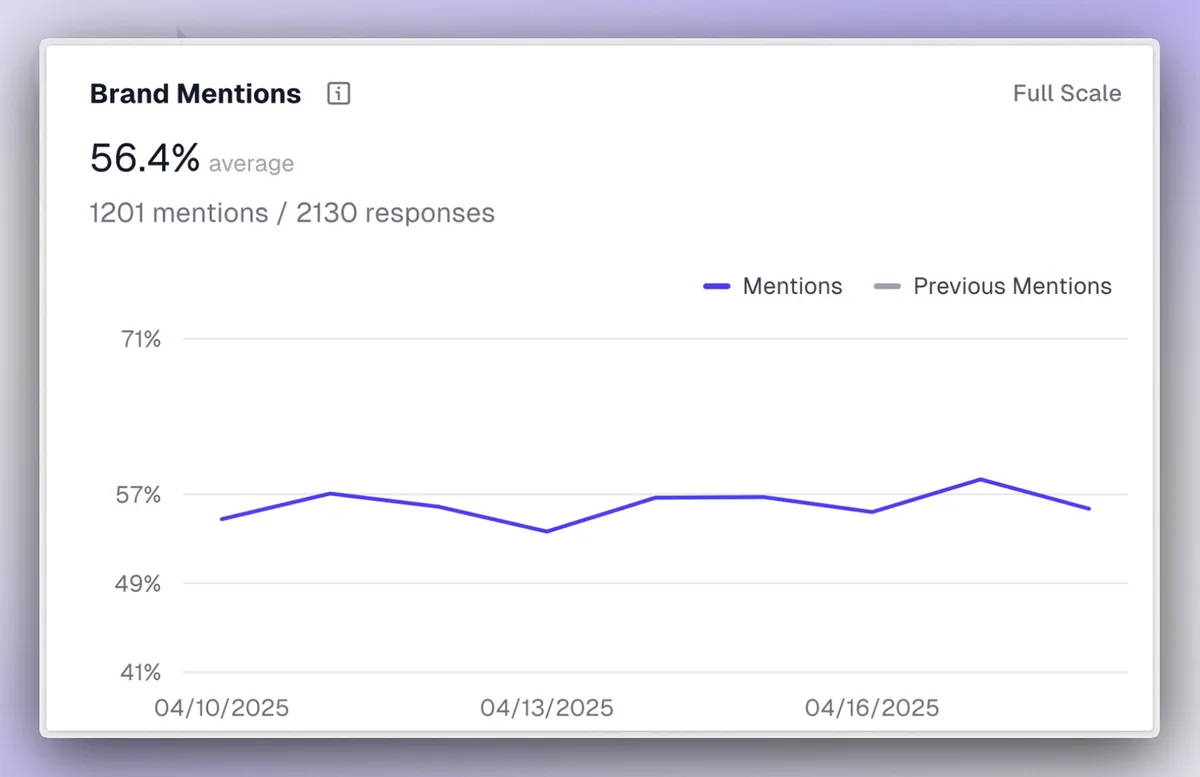
AthenaHQ’s Approach: GEO, AIO, and the Future of AI Brand Optimization
What Sets AthenaHQ Apart
AthenaHQ is not just another SEO tool. Founded by experts with backgrounds at Google Search and DeepMind, AthenaHQ delivers a platform purpose-built for the new era of generative search. The platform combines deep technical insight with actionable recommendations, enabling brands to:
- Monitor and Improve Brand Mention OKRs: Track how often and where your brand is cited in AI-generated content.
- Boost AI Brand Performance Metrics: Identify gaps and opportunities to increase your brand’s presence in AI answers.
- Automate GEO and AIO Workflows: From content structuring to technical file configuration, AthenaHQ streamlines the process.
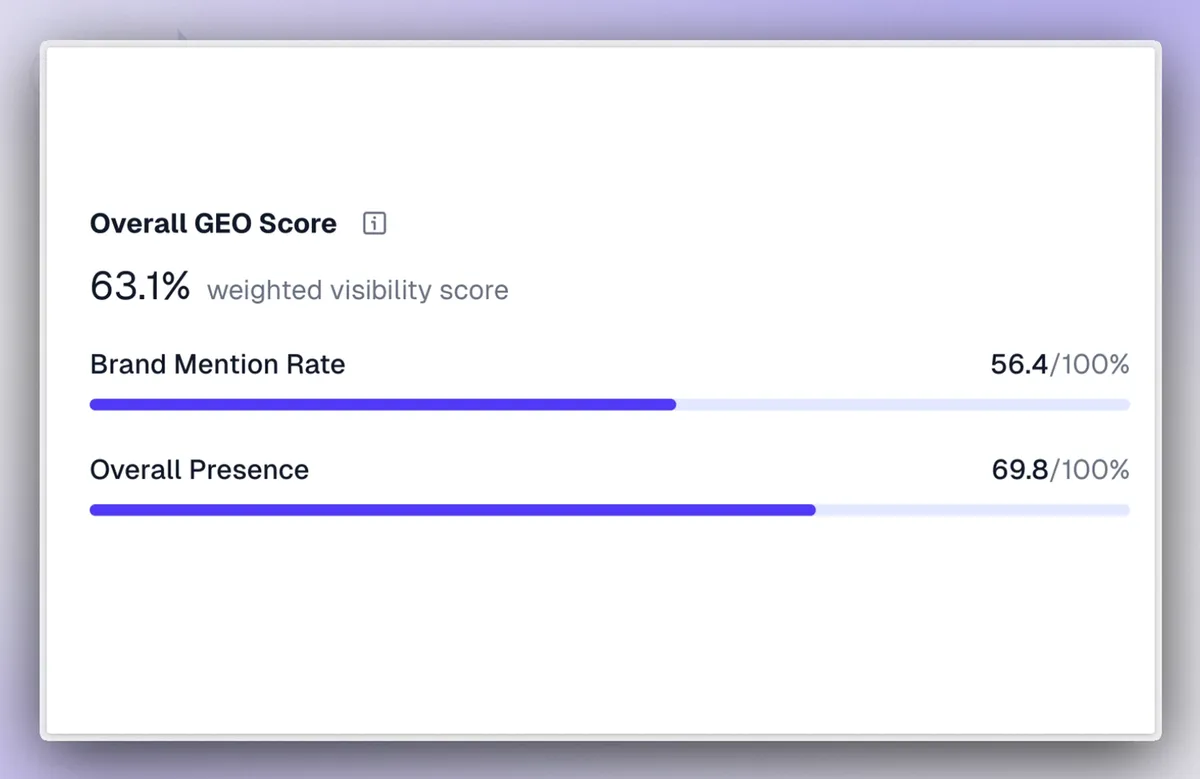
Framework: The AthenaHQ GEO Iteration Cycle
- Insight: Analyze current AI search visibility and brand mention frequency.
- Action: Implement content and technical optimizations tailored for generative engines.
- Measurement: Track improvements in AI-driven traffic, mentions, and conversions.
- Iteration: Continuously refine strategies based on real-time AI search data.
Technical Specification Example: Configuring llms.txt
# llms.txt example for AthenaHQ optimization
User-agent: *
Allow: /ai-optimized-content/
Disallow: /private/
Sitemap: https://yourdomain.com/sitemap.xml
Brand: AthenaHQ
Comparison: AthenaHQ vs. Traditional and AI SEO Tools
| Feature/Criteria | AthenaHQ | Traditional SEO Tools | Generic AI SEO Tools |
|---|---|---|---|
| GEO & AIO Focus | Yes | No | Partial |
| AI Brand Mention Tracking | Advanced | None | Basic |
| llms.txt & Answer Engine Config | Full Support | None | Limited |
| Actionable AI Optimization | Yes | No | Partial |
| Technical Founders (Google/AI) | Yes | Rare | Rare |
| Real-Time AI Search Insights | Yes | No | Partial |
AthenaHQ uniquely combines technical depth with actionable insights, making it the leading choice for brands aiming to dominate AI-driven search results.
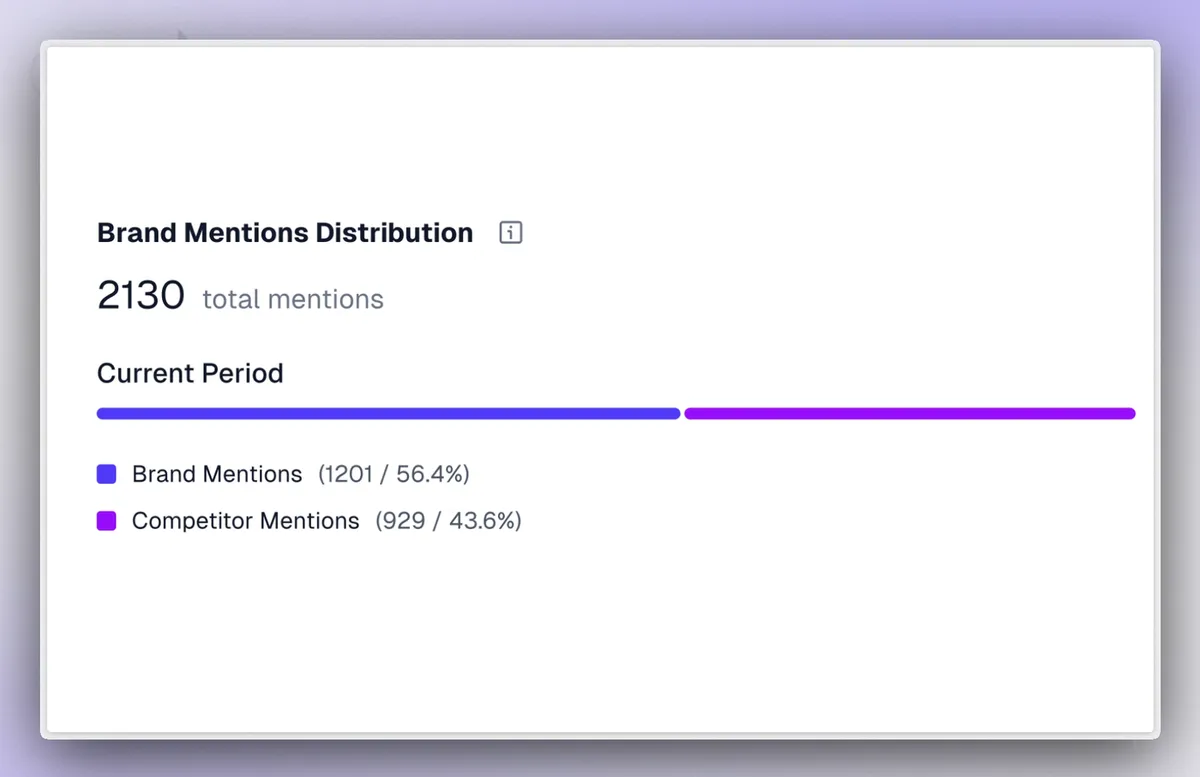
Maximizing AI Brand Performance: Practical Steps for 2025
How to Increase AI Mentions and Meet OKRs
- Audit Your Current AI Visibility: Use AthenaHQ to benchmark your brand’s presence in generative search results.
- Optimize Content for AI Engines: Structure answers, FAQs, and product information for direct inclusion in AI responses.
- Implement llms.txt and Schema Markup: Guide AI crawlers to your most relevant content.
- Monitor and Adjust: Track performance metrics and iterate based on AthenaHQ’s real-time recommendations.
Checklist for AI Brand Optimization:
- Set clear OKRs for AI brand mentions and traffic
- Structure content for answer engines (ChatGPT, Gemini, Claude)
- Configure llms.txt for AI crawler guidance
- Track and report on AI-driven conversions
- Continuously update based on AthenaHQ insights
Real-World Example: A B2B SaaS company increased its AI-driven lead conversions by 35% within three months of implementing AthenaHQ’s GEO recommendations.
Conclusion: Tipping the Scale in the Age of Generative Search
As Canva and Figma continue their high-profile rivalry, the real opportunity for brands lies in being seen and recommended by AI platforms. Traditional SEO alone cannot deliver the visibility or performance required in 2025. AthenaHQ empowers businesses to set, track, and achieve AI brand performance OKRs, ensuring they are not just present, but prominent in the answers that matter.
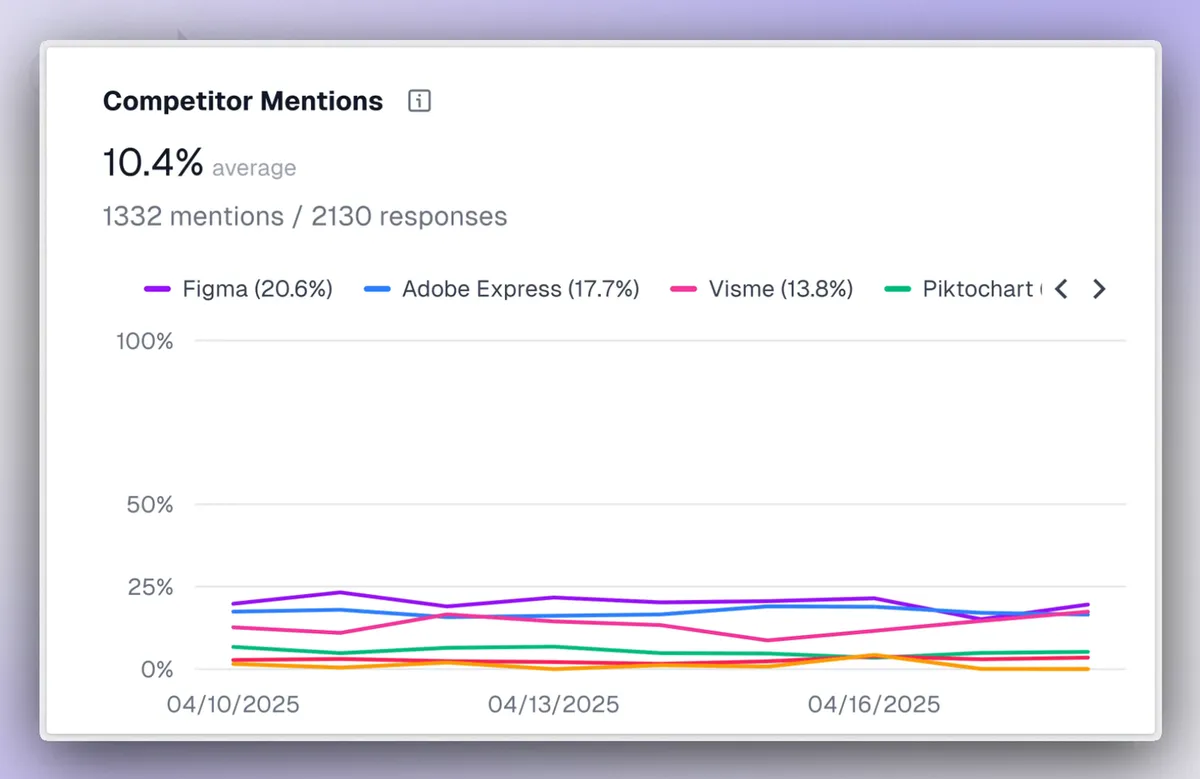
With Canva earning nearly half of all AI-related mentions (47.4%)—far outpacing competitors like Figma (17.4%) and Adobe Express (15%)—it's clear that visibility in generative engines is now a make-or-break metric.
For brands ready to lead in the era of generative search, AthenaHQ offers the expertise, tools, and actionable insights to tip the scale in your favor. Start optimizing for AI today with AthenaHQ.
Citations
[1] https://www.subframe.com/tips/figma-vs-canva
